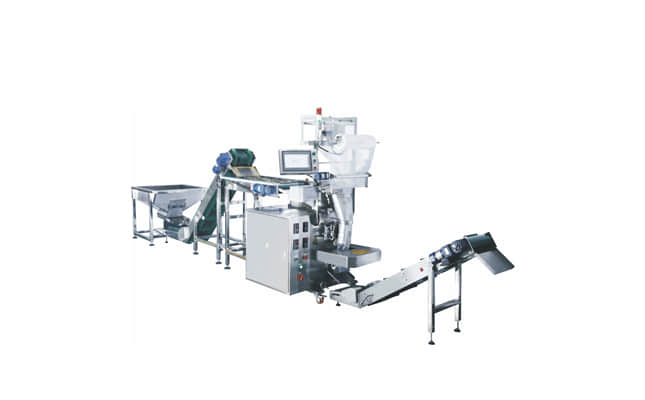
Date | 2023-05-14 08:01:49
Introduction
Automatic packing machines have revolutionized the packaging industry, providing efficiency, accuracy, and speed in the packaging process. This article explores the technical aspects of automatic packing machines and their significant contributions to the manufacturing sector.
Design and Functionality
Automatic packing machines are designed to streamline the packaging process by automating various tasks, such as product sorting, counting, filling, sealing, and labeling. These machines utilize advanced technologies, including sensors, motors, and programmable logic controllers (PLCs), to ensure precise and consistent packaging.
Product Sorting and Counting
One of the key features of automatic packing machines is their ability to sort and count products accurately. Through optical sensors and computer vision systems, these machines can identify and categorize different products based on their size, shape, or other specific characteristics. Additionally, integrated counting mechanisms enable precise quantity control, ensuring that the desired number of items are packaged in each container.
Filling and Sealing
Automatic packing machines excel in efficiently filling containers with products. They utilize mechanical systems, such as conveyor belts and augers, to transport and dispense the items into the packaging. These machines also incorporate sealing mechanisms, such as heat sealing or adhesive methods, to secure the packages effectively and prevent any leakage or contamination.
Labeling and Traceability
To meet industry standards and regulatory requirements, automatic packing machines include labeling functionalities. They can apply labels with barcodes, product information, and expiration dates onto the packages accurately. Furthermore, these machines can integrate with data management systems, enabling traceability throughout the supply chain, from production to distribution.
Integration and Control
Automatic packing machines are designed to integrate seamlessly with other manufacturing processes. They can be synchronized with upstream processes, such as filling lines or assembly lines, to ensure a continuous and efficient flow of products. PLCs control the machine's operations, allowing for easy customization and adjustment of packaging parameters, such as package size, filling quantity, or sealing pressure.
Benefits and Advantages
The adoption of automatic packing machines offers numerous benefits to manufacturers. Firstly, these machines significantly increase packaging speed and productivity, minimizing labor requirements and reducing production costs. Secondly, the accuracy and consistency of packaging lead to higher product quality and customer satisfaction. Thirdly, the automation of the packaging process enhances workplace safety by reducing manual handling of products and minimizing the risk of injuries.
Conclusion
Automatic packing machines have revolutionized the packaging industry, providing efficient, accurate, and fast packaging solutions. Their advanced technologies, including product sorting, counting, filling, sealing, and labeling functionalities, have transformed the manufacturing sector. With their numerous benefits and advantages, automatic packing machines continue to play a crucial role in optimizing packaging processes, improving productivity, and ensuring customer satisfaction.Advancements in Automatic Packing Machines
Introduction
Automatic packing machines have undergone significant advancements in recent years, revolutionizing the packaging industry with their enhanced capabilities and technological innovations. This article explores the latest developments in automatic packing machines, highlighting their increased efficiency, versatility, and reliability.
Enhanced Efficiency
Modern automatic packing machines have been optimized to deliver unparalleled efficiency in the packaging process. Through the integration of advanced control systems and intelligent algorithms, these machines can precisely calculate the optimal packaging parameters, such as filling speed, sealing temperature, and labeling position. This optimization not only maximizes productivity but also minimizes material waste, leading to cost savings for manufacturers.
Versatile Packaging Options
The latest automatic packing machines offer a wide range of packaging options to accommodate various product types and sizes. With customizable settings, these machines can handle diverse packaging materials, including bags, pouches, boxes, and bottles. The versatility extends to packaging designs as well, allowing for options such as resealable packages, multi-compartment packaging, and promotional inserts. Manufacturers can now meet the unique packaging requirements of different products, enhancing their market competitiveness.
Integration with Industry 4.0 Technologies
Automatic packing machines have embraced the concept of Industry 4.0, integrating with advanced technologies to optimize the packaging process further. Internet of Things (IoT) connectivity enables real-time monitoring of machine performance, facilitating predictive maintenance and minimizing downtime. Data analytics and machine learning algorithms analyze production data, providing insights into process optimization and quality control. This integration with Industry 4.0 technologies ensures enhanced operational efficiency and product consistency.
Improved Human-Machine Interaction
User-friendly interfaces and intuitive control systems have transformed the human-machine interaction aspect of automatic packing machines. Operators can easily navigate through the machine's functions, adjust settings, and monitor the packaging process in real-time. Visual indicators, alarms, and diagnostic tools simplify troubleshooting and maintenance tasks. The improved human-machine interaction not only reduces the learning curve for operators but also enhances overall productivity and reduces the risk of errors.
Advanced Quality Control Systems
Quality control is a critical aspect of the packaging process, and automatic packing machines now incorporate advanced systems to ensure product integrity. Vision inspection systems employ high-resolution cameras and image recognition algorithms to detect and reject defective or misaligned products. Weight sensors and x-ray systems enable accurate checking of product weight and the detection of foreign objects. These quality control features ensure that only products meeting the desired standards are packaged, maintaining brand reputation and customer satisfaction.
Conclusion
The continuous advancements in automatic packing machines have revolutionized the packaging industry, enabling manufacturers to achieve higher levels of efficiency, versatility, and reliability. From enhanced efficiency through optimization and customization to integration with Industry 4.0 technologies, these machines offer numerous benefits to manufacturers. Moreover, improved human-machine interaction and advanced quality control systems contribute to higher productivity and product quality. As automatic packing machines continue to evolve, they will undoubtedly play a pivotal role in meeting the ever-changing packaging needs of industries worldwide.
